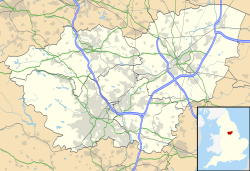| RAF Firbeck | |||||||||||
|---|---|---|---|---|---|---|---|---|---|---|---|
| Firbeck, South Yorkshire in England | |||||||||||
| Site information | |||||||||||
| Type | Royal Air Force relief landing ground | ||||||||||
| Owner | Air Ministry | ||||||||||
| Operator | Royal Air Force | ||||||||||
| Controlled by | RAF Army Cooperation Command | ||||||||||
| Location | |||||||||||
| Coordinates | 53°23′15″N001°09′45″W / 53.38750°N 1.16250°W | ||||||||||
| Site history | |||||||||||
| Built | 1940 | ||||||||||
| In use | 1940 - 1948 | ||||||||||
| Battles/wars | European theatre of World War II | ||||||||||
| Airfield information | |||||||||||
| Elevation | 65 metres (213 ft) AMSL | ||||||||||
| |||||||||||
Royal Air Force Firbeck or more simply RAF Firbeck is a former Royal Air Force relief landing ground located west of Firbeck, South Yorkshire, England.
Contents
The airfield was opened in September 1940 [1] and was closed in 1948, during this time it was mainly used as a relief landing ground (RLG) and small planes such as the Westland Lysander and the Taylorcraft Auster. After the Second World War had ended the airfield was used by two Royal Air Force (RAF) gliding schools.


